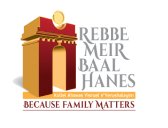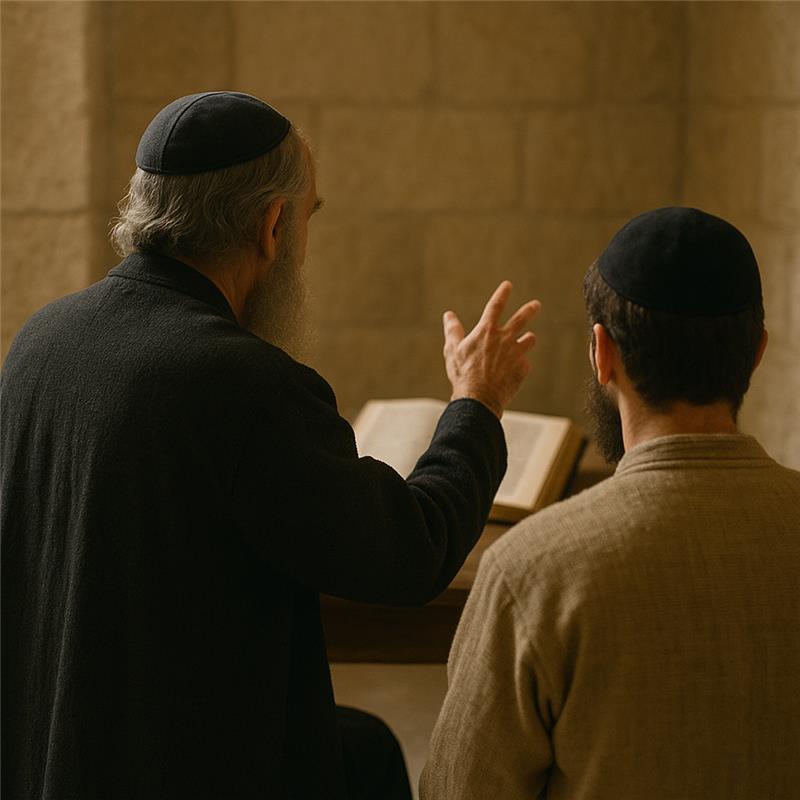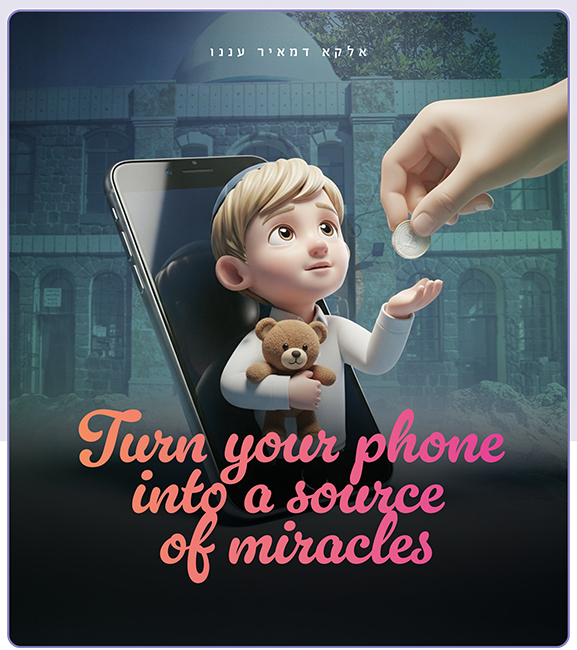Home » About Rabbi Meir » Torah Teachings & Wisdom » Three-Part Wisdom
Three-Part Wisdom:
Teaching Torah Through
Mashalim Halachah and Aggadah
Discover how Rabbi Meir’s balanced method makes Torah learning come alive for every student.
Teaching any subject requires sensitivity to the wide range of skills, abilities, and learning styles that children bring to the classroom. Some grasp ideas best through analysis, while others connect more deeply through stories, discussion, or hands-on experiences. Especially with teaching Torah to children, this diversity demands even greater care. The task of the teacher is not simply to transmit information, but to craft a learning experience that reaches each student on their own terms—engaging the logical thinker, the imaginative dreamer, and the hands-on learner all at once.
Rabbi Meir Baal Haness, renowned throughout theTalmud for his exceptional teaching abilities and mastery of parables, created a simple yet powerful solution. His method splits Torah learning into three equal parts – halacha (halakhah) and aggadah plus meshalim (parables) – making Torah accessible to every type of learner.
Rabbi Meir Baal Haness Charities, founded in 1799, keeps this teaching method alive today. Through your support, we enable Torah schools in Eretz Yisroel (the Land of Israel) to preserve and transmit this proven approach. The approach to helping all students learn according to their abilities and learning styles continues helping Jewish children connect with their heritage, regardless of their abilities or family background.
Explore how our programs bring Rabbi Meir’s balanced teaching approach to life in modern Torah education.
Understanding Halachah and Aggadah in Balance
The Talmud tells us exactly how Rabbi Meir taught his students. He divided each lesson into three equal parts: one-third halacha (halakhah) and aggadah each, with the final third for meshalim (parables). This wasn’t random—it was genius.
Think about how people learn differently. Some students love analyzing Jewish law and figuring out the halacha definition for daily life. Others connect better through stories found in aggadic midrash. And some need parables to make abstract ideas concrete. Rabbi Meir’s method speaks to all these learners at once.
The Talmudic Source
When you focus on just one type of learning, something gets lost. Laws without stories feel dry. Stories without laws lack practical guidance. Parables alone, while memorable, need the foundation of law and narrative to make sense. This balanced approach has proven itself effective across generations of Torah learners.
What Is Halacha? The Foundation of Jewish Law
The halacha definition is simple: it’s Jewish law that guides everyday life. From prayer to business deals, from Shabbos (Sabbath) rules to how we treat others, halacha shows us the path. The Hebrew word itself means “to walk”—because these laws are the path Jews walk through life.
In Rabbi Meir’s method, halacha takes up exactly one-third of each lesson. But this isn’t just about memorizing rules. When teaching about lighting Shabbos candles, for example, teachers explain both the technical details—when to light, how many candles, which brachos (blessings)—and the deeper meaning of bringing light and holiness into the Jewish home.
Rabbi Meir Baal Haness Charities supports Torah teachers across Eretz Yisroel who understand the importance of balanced instruction. While today’s educators may not follow the exact one-third formula, they recognize that teaching halacha alone isn’t enough—students need stories and parables to truly connect with the laws. These teachers find the right balance for today’s generation, ensuring students stay engaged while mastering essential Jewish knowledge.
What Is Aggadah? Stories That Illuminate Truth
Support Torah Education Today
Aggadic midrash is the heart of Jewish storytelling. When teaching about faith during hard times, a teacher might share how Rabbi Akiva stayed joyful even in prison. Or they might tell how Rabbi Meir himself kept hope alive through terrible persecution. These stories give context that pure law study can’t provide.
The beauty of aggadah is how it speaks to different ages at once. A young child hearing about Abraham’s hospitality learns to welcome guests. An adult finds deeper meanings about serving God. Rabbi Meir knew these stories create emotional connections that straight learning rarely achieves. Through your support of Rabbi Meir Baal Haness Charities, these powerful stories continue reaching new generations.
Mashal Meaning: The Power of Parables in Torah
The mashal meaning reveals the third piece of Rabbi Meir’s method. A mashal is a parable—a simple story that explains complex spiritual ideas through everyday examples. The Talmud says Rabbi Meir knew three hundred fox fables to teach Torah concepts.
Each parable starts with something familiar: a king and his servants, a merchant looking for pearls, a father waiting for his son. Through these everyday scenes, deep spiritual truths emerge. The nimshal meaning—the real lesson hidden in the story—creates moments of clarity that students remember forever.
Want to teach about teshuvah (repentance)? Beyond the halacha (halakha) definition of repentance laws and abstract concepts, share a parable about a child who wandered from home. The journey back—the uncertainty, the parent’s constant searching, their emotional reunion—makes returning to God feel real and achievable. Students don’t just understand teshuvah intellectually; they feel it in their hearts.
Teaching Torah to Children Through Three-Part Wisdom
Making Torah Accessible for Young Learners
The challenge of teaching Torah to children today finds its answer in Rabbi Meir’s ancient method. Parents want to pass on Jewish values but struggle to keep kids engaged. The Three-Part Wisdom provides structure that respects tradition while meeting children where they are.
For parsha for preschoolers, divide learning into three ten-minute segments:
- Halacha: A simple mitzvah (commandment) from the weekly Torah portion
- Aggadah: An exciting story that brings the parsha to life
- Mashal: A short parable that helps kids remember the lesson
Adapting for Elementary Ages
Parsha for kids in elementary school can handle longer segments. The halacha portion explores age-appropriate Jewish laws. The aggadah section might include acting out Torah stories. The mashal time could involve students creating their own parables to share with the class.
Rabbi Meir Baal Haness Charities provides support to teachers using this method across Eretz Yisroel. These resources ensure every Jewish child gets quality Torah education, no matter their family’s financial situation. The method works especially well when siblings of different ages learn together at home.
Modern Applications for Parents and Educators
Success in Today's Classrooms
Teachers using Rabbi Meir’s framework for teaching Torah to children report improvements in student engagement. The method fits perfectly with what modern education knows about different learning styles. Schools using Three-Part Wisdom find that students who struggled with traditional text study often connect through stories or parables instead.
For parents teaching at home, the three-part structure makes planning easy:
Step 1
Step 2
Step 3
Supporting Educational Excellence
Rabbi Meir Baal Haness Charities helps preserve this teaching tradition by supporting Torah scholars and educators throughout Eretz Yisroel. The charity ensures that those dedicated to transmitting this balanced approach can continue their holy work without financial worry.
The Three-Part Wisdom method of halacha and aggadah with meshalim adapts to modern needs while maintaining its essential structure. Whether in traditional classrooms or contemporary settings, the balanced approach of halacha and aggadah with parables continues proving its effectiveness.
Supporting This Sacred Educational Legacy
Rabbi Meir’s Three-Part Wisdom method needs community support to continue thriving in today’s world. Rabbi Meir Baal Haness Charities, serving the poor of Israel since 1799, channels donations directly to Torah scholars and educators who preserve this balanced approach of halacha and aggadah with parables. For over two centuries, we have ensured that Torah teachers can focus on transmitting wisdom without financial stress, while providing tuition assistance so no Jewish child is denied Torah education due to poverty.
When you give tzedakah through Rabbi Meir Baal Haness Charities, you join a teaching legacy that has transformed countless lives. We regularly receive reports from Eretz Yisroel about students who discovered their love for Torah through balanced teaching methods—children who struggled before but now thrive with multiple pathways to understanding. Your donation ensures that the Three-Part Wisdom continues illuminating Torah for future generations, while Rabbi Meir Baal Haness’s promise to intercede in Heaven for those who give charity in his memory brings blessings to your own life. In the merit of Rabbi Meir Baal Haness, may you be blessed with Bracha and Hatzlochah. Continue this sacred tradition by supporting balanced Torah education today.
Continue Rabbi Meir's Teaching Legacy
Common Questions About the Three-Part Wisdom Method of Rebbe Meir Baal HaNess – His Masterful Teaching Style That Continues to Guide Us Today
What exactly are halacha (halakhah) and aggadah?
Halacha (also spelled as Halakhah) refers to Jewish law—the practical commandments and rules that guide Jewish daily life, from prayer and Sabbath observance to business ethics. Aggadah encompasses the non-legal portions of Jewish texts, including stories, ethical teachings, parables, and philosophical discussions found in the Talmud and Midrash. While halacha tells us what to do, aggadah explains why it matters and inspires us through narrative. Together, they create a complete picture of Jewish wisdom and practice. The most effective Torah education balances both elements rather than focusing on one exclusively.
How can I use the Three-Part Wisdom of Rebbe Meir Baal Haness when teaching Torah to children at home?
Split your learning time into three equal parts. For young children, try 5-10 minutes each. First, teach a simple Jewish law connected to the weekly Torah portion or upcoming Yom Tov (holiday). Next, share a story that shows this idea in action. Finally, tell a mashal (parable) that helps kids remember the lesson. The key is keeping balance—don’t let one part take over the others. This variety keeps children interested while building complete Torah knowledge. Many families find this method brings everyone together, from grandparents to preschoolers.
Why are meshalim (parables) so important in Jewish education?
A mashal takes big spiritual ideas and makes them simple through everyday stories. The nimshal—the deeper meaning—becomes clear even to those who struggle with complex concepts. Rabbi Meir knew that parables create moments of understanding where difficult ideas suddenly make sense. These stories stick in memory much longer than abstract lessons. In today’s world, meshalim help connect ancient wisdom to modern life. Your support helps teachers in Eretz Yisroel continue using these powerful teaching tools.
How does supporting Rabbi Meir Baal Haness Charities preserve this method?
Rabbi Meir Baal Haness Charities, established in 1799, directly supports Torah schools and teachers who balance their Torah teaching with varied approaches—combining law, stories, and practical examples. Donations help Torah scholars and educators who struggle financially, as well as providing tuition assistance for students whose families cannot afford Jewish education. The charity ensures that dedicated teachers can continue their holy work without financial stress while making Torah education accessible to all Jewish children. Every donation maintains the unbroken chain from Rabbi Meir’s time to today. As Rabbi Meir promised, those who give tzedakah (charity) in his memory receive heavenly assistance with their own needs.
Does Three-Part Wisdom work with diverse student groups?
Rabbi Meir Baal Haness’s method of combining halacha, aggadah (narratives), and meshalim (parables) works beautifully with mixed groups. Different learners connect through different parts—analytical students through halacha, story-lovers through aggadah, creative thinkers through meshalim. Teachers report that students who seemed disconnected often find their entry point through one section, then gradually appreciate the others. The framework lets teachers adjust to student needs while keeping overall balance. This flexibility makes it perfect for inclusive classrooms where every Jewish child can succeed.

 The 300 Fox Fables
The 300 Fox Fables  Rabbi Akiva’s Star Student
Rabbi Akiva’s Star Student
 From Nahori to Meir
From Nahori to Meir Ancient scribe’s quill, ink, and parchment representing Rabbi Meir’s editorial work
Ancient scribe’s quill, ink, and parchment representing Rabbi Meir’s editorial work
